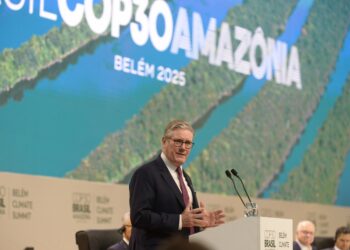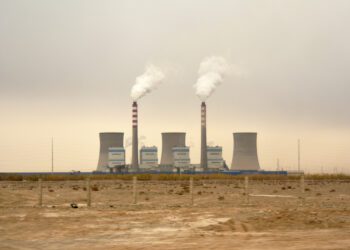Electric cars grab all the headlines — perhaps you’re thinking about a certain brand beginning with the letter “T” right now — but there’s a whole lot more to sustainable transportation than electric cars.
And it’s not just planes, trains and automobiles, either: there are plenty of fascinating niches within the transportation sector that are ripe for decarbonization, like cargo-handling equipment at container ship terminals, baggage-handling equipment at airports, school buses, and even small trucks called spotters that move trailers back and forth around freight yards.
Decarbonizing transportation of all forms is a global imperative given the sector’s significant contribution to greenhouse gas emissions. After electricity and heat generation, transportation is the largest contributor to emissions globally, according to the International Energy Agency. Passenger road vehicles are the primary source of carbon dioxide emissions in the transportation sector, followed by road freight, aircraft, and ships, the agency’s datashows.
Niche modes of transport might not make the headlines but they’re fascinating to investors like us. The fact is, widespread decarbonization of many forms of transportation — aircraft and container ships, for example — is some way off because the technology isn’t yet there to support mass adoption. While niche modes of transportation may be a small piece of the pie, they still present a meaningful opportunity to decarbonize while other use cases mature.
Part of our playbook is investing in established transportation businesses and decarbonizing, for example, bus and truck fleets when we know that the economics will work and where the market leadership of the company allows for investment in R&D and the ability to influence the direction of the entire industry towards decarbonization. We consider the availability of federal and state funding for renewable transitions, we structure contracts to support up-front investment in transitioning fleets, and we seek to open ancillary revenue streams once we’re up and running.
In the Nordics, another of our portfolio companies is leading the charge on decarbonizing ferries. Nordic Ferry Infrastructure already operates electric and hydrogen-powered vessels across its fleet and aims to have 60 percent green vessels by 2030. We’ve also invested in electrifying yard spotters and in decarbonizing ship cargo handling machinery.
If a particular form of transport is to make the transition away from fossil fuels, it has to make financial sense. Buyers need to see that the total cost of ownership is at least somewhere near parity with a fossil fuel-powered equivalent. That’s somewhat true of electric cars still: not everybody can afford to pay the Model S or Model X premium. The same is also true of other forms of road transport.
But we’re getting close to achieving parity for electric cars, as well as for light trucks, as technology continues to advance, leading to cost improvements and continued incentive support from the government. For mid-duty and heavy-duty trucks, we’re probably looking to 2026-27 to reach some sort of equilibrium. Reaching parity marks something of an inflection point because it’s a trigger for accelerated sales growth. As economics, use cases, regulations, and government incentives push fleets to electrify, there will be a significant demand increase for the required infrastructure that is needed to support electrification. Despite significant investment into charging infrastructure by both public and private investors, this area is still expected to be a bottleneck due to the amount of electricity demand it will generate.
Herein lies another big part of our investment playbook: charging stations and other supporting infrastructure. We’ve invested in Voltera, which develops charging infrastructure necessary to support the full electrification of transportation. Voltera provides a turnkey fleet EV charging infrastructure to customers by acquiring real estate, setting up power connections, and procuring chargers and charge point operation software. Voltera is focused on providing high-powered EV charging at scale, which requires 5+ MW per location. With a first-mover advantage, Voltera is quickly becoming a leading EV Infrastructure developer. As of today, Voltera owns 21 sites in key hubs of the US and operates one of the largest operational sites for electric heavy-duty freight in North America
However we get there, it’s clear that demand for electric vehicle charging infrastructure is set to grow fast. In the U.S., electricity consumption in the transportation sector is expected to soar from 2GWs per year in 2020, growing to 65GWs annually by 2030 – and 100GWs per year by 2035.Charging infrastructure will need to meet a significant amount of that demand, so we’re planning and investing to get ahead of the curve.
So as we look at the bigger picture, we are excited about the investment opportunities that await us. The thematic trend of decarbonization has created multiple opportunities for value creation across the industry. And we believe our experience as an early investor in the electrification market will allow us to continue finding attractive investment opportunities across the transportation and logistics landscape.
Read the full article by Neha Jatar and Erwin Thompson / EQT












